









(via The 1954 Chevrolet Corvette Corvair Motorama Concept Car Reborn)
from Tumblr https://somar78.tumblr.com/post/656519403333124096
This is a 1987 Ford Econoline van that’s been equipped for prolonged road trips, or as they call it nowadays, “Vanlife.” Original surviving examples from the golden era of custom vans are increasingly rare, they’re also increasingly sought after by enthusiasts and collectors.
The 60s, 70s, and 80s were a time when vans really came into their own, from the hippie movement and its association with the VW Kombi van, to the wild custom velour vans of the 70s, and the A-Team van of the 1980s. Vans became just as much a part of custom automotive culture as cars, trucks, and motorcycles.
The Ford Econoline was designed in the late 1950s and introduced in 1960, it was intended to compete with the VW Transporter/Kombi and the Chevrolet Corvair 95 van. In the years since the Econoline, now the E-Series, has become second longest running model in Ford history after the F-Series trucks.
The 1987 Ford Econoline you see here is from the third generation of the model family that was introduced in 1975 and sold until 1991. Unusually for a van it used body-on-frame construction which made it ideal for conversion into ambulances, small busses, and even trucks.
Above Image: With acres of red velour this is a quintessentially 80s custom van.
During the 70s and 80s “Conversion Vans: became popular in the United States and around the world. These were vans that were either sent away to be converted by specialist companies or converted by amateurs in their own garages.
Conversion Vans could be built to just about any specification you can imagine, from extended wheelbase limousine vans to fully equipped camper vans with their own jacuzzi – it’s all been done at least once.
Skipping forward to the 2010s and into the 2020s and vans are taking centerstage once again as an entire generation embraces vanlife and sets out for adventures of their own.
Modern custom vanlife vans are typically far more utilitarian than their ancestors from the 70s and 80s, perhaps a little more like the hippie vans of the 1960s. That said there is huge variety as always, and some modern van rebuilds are just extraordinary.
The van you see here is an Econoline from 1987. It benefits from a number of upgrades including a high roof conversion with windows at the front for additional light in the back.
Above Image: The van has large curtained side windows and entry is by side and rear double doors.
This Econoline is powered by a fuel-injected 5.0 liter Ford V8 engine sending power back through an automatic transmission to the rear wheels. It also has power steering and power brakes, cruise control, power windows, and an overhead console with a CB radio.
Inside the van you’ll find red carpeting, a red dashboard, and ample red velour throughout. I secretly suspect that at least 80% of global velour output during the 70s and 80s was used by people building custom vans just like this one.
Frustratingly the main rear section of the van isn’t pictured or described in any way. Right at the back of the van inside the double doors there’s a rack for hanging clothes and we can see the back of a seat, so it’s possible this seat folds down to make a bed – however there’s no way to know without seeing it.
If you’d like to read more about this unusual van or register to bid you can click here to visit the listing on Mecum. It’s due to roll across the auction block in late July and at the time of writing there’s no price guide listed.
Images courtesy of Mecum
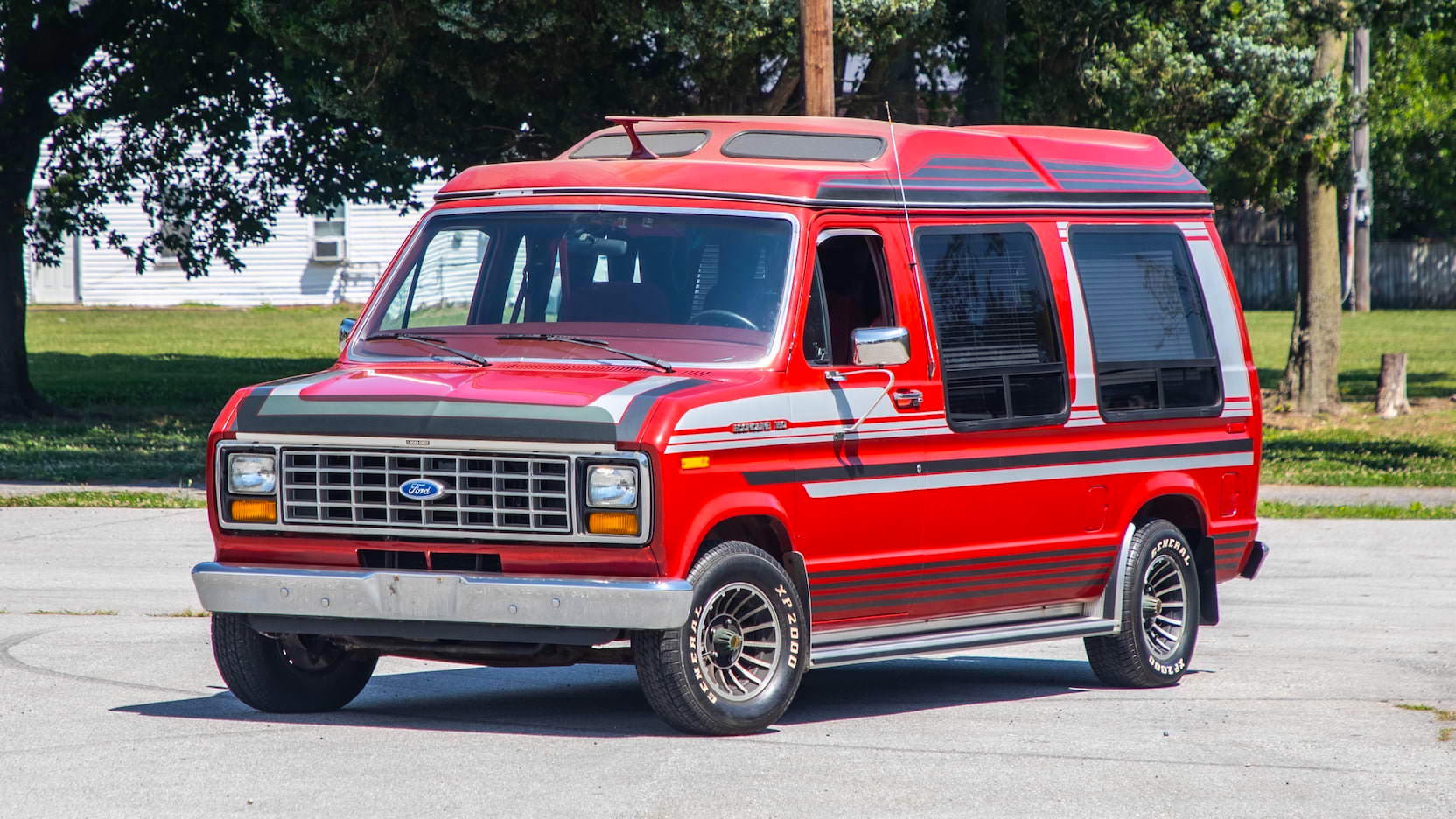
The post An Original Custom 1980s Ford Econoline Van appeared first on Silodrome.
This is a recently restored and modified version of the International Harvester Scout 800, from the chassis on down almost everything has been changed including the axles, suspension and brakes.
The transmission, transfer case, and engine have all been upgraded as well, resulting in a Scout 800 that is vastly quicker and more powerful than the 4×4 it started out as.
Modified Scouts like this are becoming increasingly popular, along with their period sales competitors like the Bronco, Jeep CJ, Land Rover, and Land Cruiser.
✱ The International Scout 800 was the upgraded version of the original Scout 80. The Scout 800 featured a range of improvements to make it slightly more comfortable, including better seats, instrumentation, heating, optional rear seats, an updated dashboard, and some new engine options.
✱ The model was sold from 1965 until 1971 over three major model variations, and the sheet metal would stay largely the same through the Scout II generation until 1980.
✱ The International Harvester Scout is remembered today as one of the original SUVs and the vehicle that inspired the Ford Bronco.
✱ The Scout 800 you see here has been restomodded significantly from new, but it keeps the original vehicle’s tough simplicity.
When the International Scout first entered development in the late 1950s there was only a very small market for civilian four-wheel drives, and this market was largely dominated by the Jeep CJ.
Above Image: The interior is upgraded over the original vehicle, with new instrumentation, power steering, , an upgraded sound system, and a slew of other mods.
There were a few other manufacturers out there of course, like Land Rover over in England, but the long and short of it is that the leisure 4×4 world was still in its infancy, and no one knew if it was going to grow or fizzle out.
The early designs of the Scout had angular steel bodies that failed to win approval for production, Chief Designer Ted Ornas later designed a plastic body with some curves that the board of directors did like. Production of this plastic bodied car never went ahead, however the basic design did form the foundation of the eventual production Scout, which would have a steel body.
The first International Scout was the “80” model, it was offered with two doors, a removable roof, and a fold-down windshield. It was a very simple vehicle with few creature comforts, International Harvester kept it in production from 1961 until 1965 when it was replaced with the slightly more refined Scout 800.
Today the Scout 80 and Scout 800 are the most sought after model iterations, and even rusted out junkyard residents are attracting serious money. There are two primary kinds of restorations undertaken, concours restorations and restomods, that is modified restorations with a slew of upgrades to make them handle better, go faster, stop quicker, and to make them more comfortable to live with.
Above Image: This Scout is now powered by a 5.3 liter LS Vortec V8 engine capable of over 300 hp.
The Scout you see here has been comprehensively rebuilt by IH Parts America, it was subject to a full body-off restoration with upgrades and servicing by Bulletproof Restorations.
Power is now provided by a 5.3 liter LS Vortec V8 engine capable of over 300 hp and 330 ft lbs of torque. This is obviously vastly more power than the Scout came with originally, so the entire drive line was upgraded to better match the new engine.
Dana 44 axles replace the originals at the front and rear with a 3.92:1 final drive ratio, power is sent to them through a GM 4L60-E automatic transmission and a NP241C transfer case. The original drum brakes have been replaced with discs front and back, for safety if nothing else given the vastly increased power.
The interior of this Scout has been developed to stay true to the minimalism of the originals with only a few subtle ugrades, like a wood-rimmed Grant steering wheel, a wooden gear knob and custom-fabricated metal trim across the dashboard.
Since it was built this Scout has accumulated just 3,500 miles on the odometer, and it’s first servicing was completed by technicians at Bulletproof Restorations at 2,100 miles. If you’d like to read more about it or register to bid you can click here to visit the listing on Collecting Cars.
Images courtesy of Collecting Cars
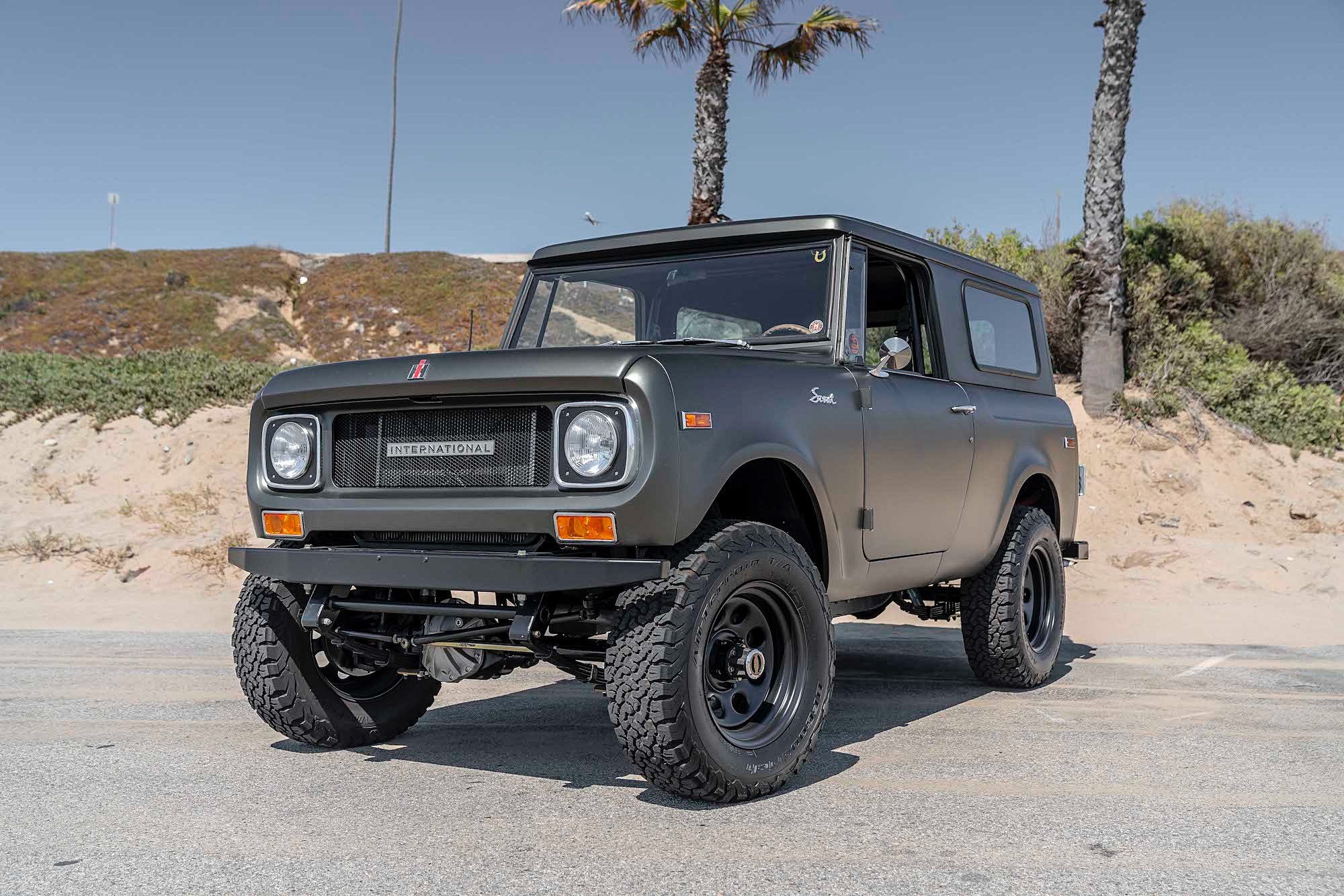
The post For Sale: An International Scout 800 Restomod appeared first on Silodrome.

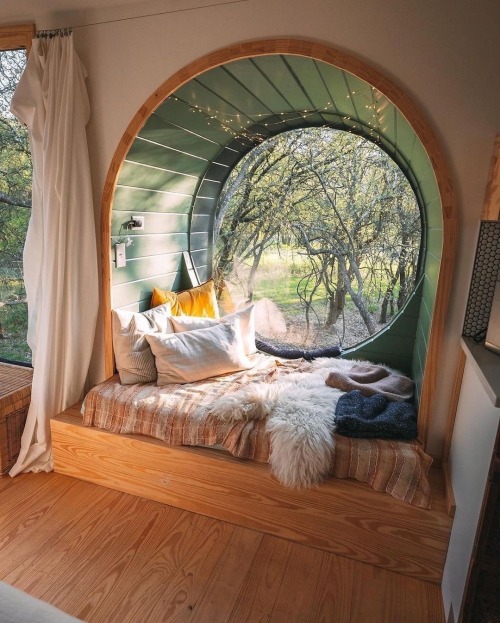
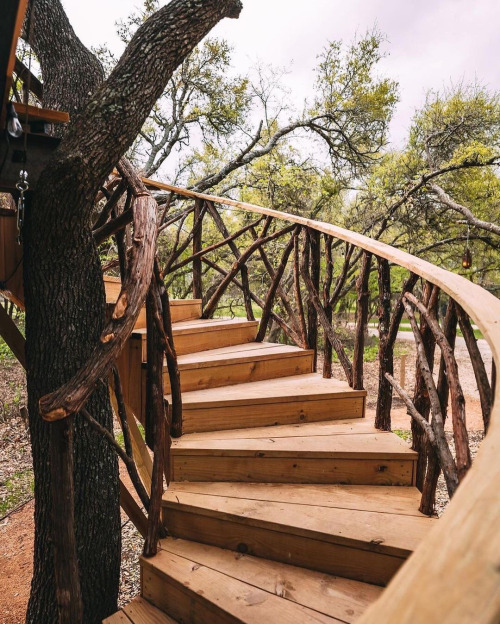



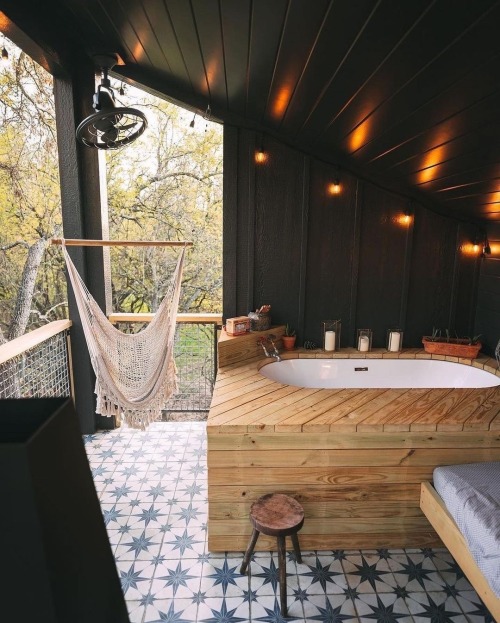
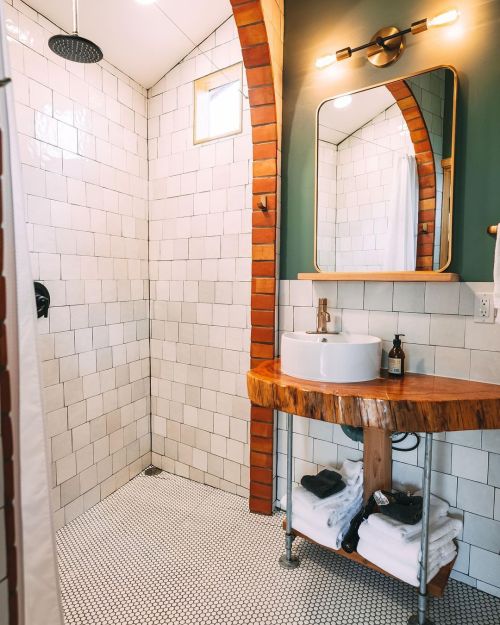
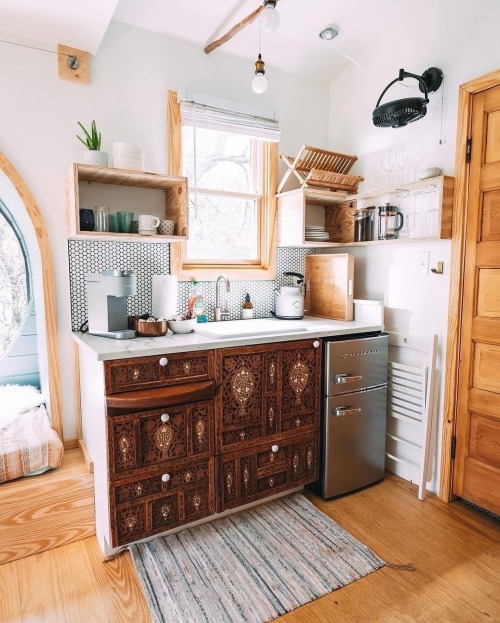
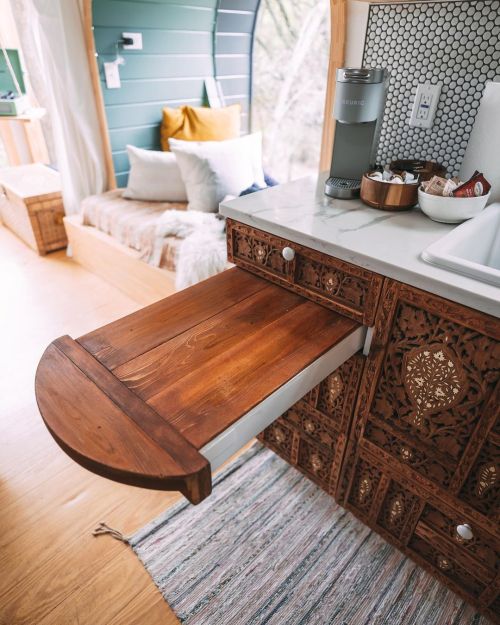
utwo:
The Treehouses at HoneyTree Farm
Frediricksburg Texas
© HoneyTree Farm